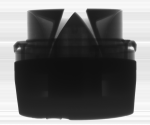Hi Ashly;
Don't get impatient with me, sometimes I have a hard time following you. Do you mean is there a easier to view graph? Or are you looking for one with extended bandwidth? In all my books that is the only aspect ratio I have ever seen.Is there a winder stretched out version of the same graph, or is that it?
Did you by chance read the page I linked you to? If not I would read it.
Don't let an RTA drive you crazy, it's a useful but very limited tool.




 Reply With Quote
Reply With Quote
 otherwise I’d be shooting the dark with the EQ.
otherwise I’d be shooting the dark with the EQ.



 Copyright © 2005 Nucleus Communications, Inc. All rights reserved.
Copyright © 2005 Nucleus Communications, Inc. All rights reserved. 

